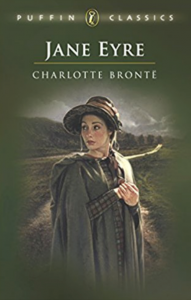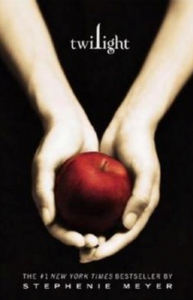Lydia (Year 11) investigates the portrayal of women in literature, a field that has largely been controlled by the male voice, and how this has changed throughout the centuries.
The literary world has always been (and remains) dominated by men. As male writers create their female characters, they often fall short of capturing the interesting, vivid complexity of womanhood which we, as women, know to be reality. Since Shakespeare’s heyday, it’s fair to say that the role of women in society has changed significantly; but how has this change affected how male writers portray women in literature, if it has at all?
When Shakespeare’s Macbeth was performed (circa. 1602), women were expected to be submissive to their husbands, punished for being ‘scolds’ or ‘nags’. Fear of women’s speech was prevalent, spread by imperious treatises. The extremely popular treatise, Anatomy of a Woman’s Tongue, claimed
“A woman’s tongue it is the devil’s seat;
and that it is a most pernicious lyar,
a backbiter and a consuming fire”
summing up misogynistic attitudes of the Jacobeans with a catchy rhyme. And, of course, there were the witch burnings, vast numbers of women executed for being transgressive, reclusive or powerful.
This attitude towards women is noticeable in Shakespeare’s work as he links the powerful women in Macbeth to the world of spirits and demons. Through studying Macbeth and watching various productions, such as that performed at the National Theatre, it is easy to be struck by how Shakespeare presents women as a manipulative force, blaming them for the immoral actions of men. The misogynistic attitude behind this becomes obvious when compared to how Shakespeare presents Macbeth himself, murderer of the sleeping king and his own close friend, as a basically good, if slightly unhinged, man.
Another greatly beloved male writer is Charles Dickens. By the time Great Expectations was published in 1860, the Jacobeans and their witches were centuries dead, though reductive attitudes towards women lived on. The continued ownership of women by men and the surprising lack of social progress in the centuries between Macbeth and Great Expectations is revealed by similarities between Dickens’ and Shakespeare’s portrayal of women.
In Macbeth, Shakespeare portrays Lady Macbeth’s desire for power as unnatural and dangerous as she orders spirits to remove remorse and conscience from her body and replace her breast-milk with acid. Dickens uses uncannily similar imagery of mutilation and hardening in Great Expectations as the proud Estella claims “I have no heart … I have no softness there, no—sympathy—sentiment—nonsense” and Miss Havisham echoes “I stole her heart away and put ice in its place.” This idea that all women who transgress the role of tender, servile femininity must be unnatural perversions of nature is used by both Shakespeare and Dickens, revealing that, despite the centuries passed, men continued to hold the same views regarding the role of women in society.
Dickens is famed for his portrayal of meek, simpering virgins (often paired with epithets such as ‘dear’ and ‘little’). In Great Expectations this trope manifests itself in Clara Barley. Clara is a paradigm of servility, tending constantly to her abusive father yet still managing to appear “natural and winning” and well as “confiding, loving and innocent”. Dickens reveals Victorian attitudes that women should be submissive, praising Clara’s “modest manner of yielding herself to Herbert’s embracing arm.” The anti-Estella, Clara is just as two-dimensional, a figment of the imagination of the imperious male.
The 20th Century saw great change in how women were viewed in society, earning the vote in Britain in 1918. The end of the 1920s saw the Equal Franchise Act passed, granting equal voting rights to women. Did this rapid progress, and the surging momentum of the feminist movement, pave the way for a parade of wonderful heroines written by men?
It seems not, if John Steinbeck’s Of Mice and Men, best-seller of the 1930s, is anything to go by, featuring not one named female character, only ‘Curley’s wife’, the self-absorbed, cruel and teasing caricature of female shallowness and naivety. Steinbeck punishes this woman for her crimes of promiscuity and stupidity with a broken neck, echoing the methods of past writers; Shakespeare delivers Lady Macbeth a grizzly suicide and Estella is condemned to a life of abuse at the hands of Drummel. Though Steinbeck sticks fast to the well-trodden tropes of two-dimensional femininity, the literary world has a growing female voice in this decade as Daphne du Morier, Agatha Christie and Virginia Woolf begin penning novels of their own, featuring swathes of heroines.
However, men have, on occasion, written brilliant female characters: for example Shakespeare’s Juliet and Tolstoy’s Anna Karenina, but these are exceptions to a centuries old pattern in which women are written as either fantastical paragons of innocence or cruel monsters. The recent twitter trend, which inspired this article, asserts that this pattern marches onwards to the present day. So as far as writing funny, interesting, realistic women goes, I guess it’s down to us.
Follow @English_WHS on Twitter



 What is it that renders Jane Eyre and Wuthering Heights simply better novels than Twilight?
What is it that renders Jane Eyre and Wuthering Heights simply better novels than Twilight?